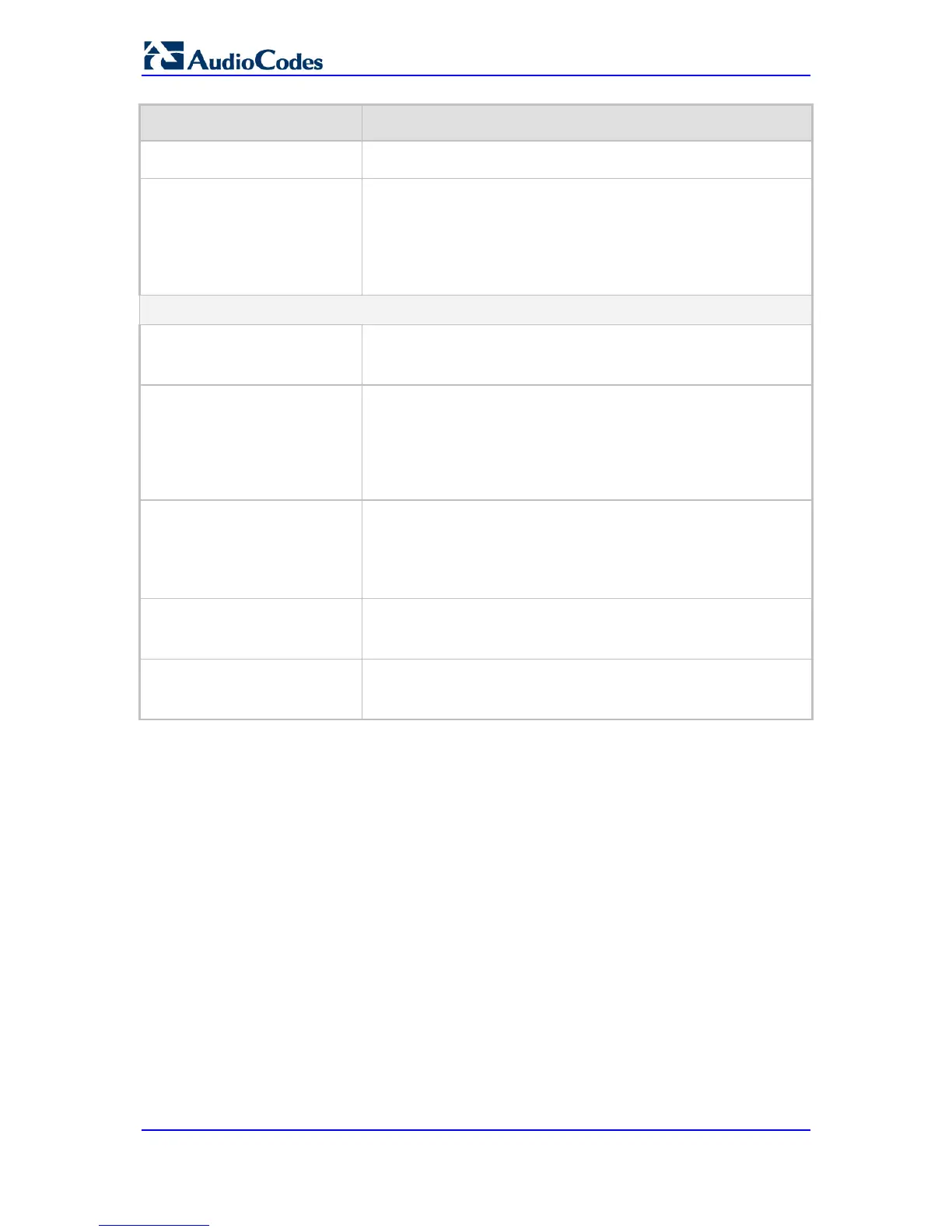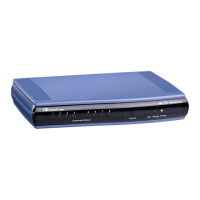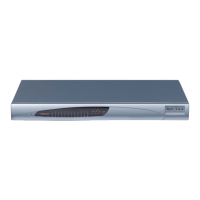REGISTER.
Manipulated URI
[IPInboundManipulation_Mani
pulatedURI]
Determines whether the source or destination SIP URI user part is
manipulated.
[0] Source = (Default) Manipulation is done on the source SIP
URI user part.
[1] Destination = Manipulation is done on the destination SIP
URI user part.
Operation Rule (Action)
Remove From Left
[IPInboundManipulation_Rem
oveFromLeft]
Defines the number of digits to remove from the left of the user
name prefix. For example, if you enter 3 and the user name is
"john", the new user name is "n".
Remove From Right
[IPInboundManipulation_Rem
oveFromRight]
Defines the number of digits to remove from the right of the user
name prefix. For example, if you enter 3 and the user name is
"john", the new user name is "j".
Note: If both 'Remove From Right' and 'Leave From Right'
parameters are configured, the 'Remove From Right' setting is
applied first.
Leave From Right
[IPInboundManipulation_Leav
eFromRight]
Defines the number of characters that you want retained from the
right of the user name.
Note: If both 'Remove From Right' and 'Leave From Right'
parameters are configured, the 'Remove From Right' setting is
applied first.
Prefix to Add
[IPInboundManipulation_Prefi
x2Add]
Defines the number or string that you want added to the front of the
user name. For example, if you enter 'user' and the user name is
"john", the new user name is "userjohn".
Suffix to Add
[IPInboundManipulation_Suffi
x2Add]
Defines the number or string that you want added to the end of the
user name. For example, if you enter '01' and the user name is
"john", the new user name is "john01".
27.5.3 SAS Routing Based on IP-to-IP Routing Table
SAS routing that is based on SAS Routing table rules is applicable for the following SAS
states:
Emergency,, if the 'SAS Survivability Mode' parameter is not set to Use Routing
Table only in Normal mode.
The SAS routing rule destination can be an IP Group, IP address, Request-URI, or ENUM
query.
The IP-to-IP Routing Table page allows you to configure up to 120 SAS routing rules (for
Normal and Emergency modes). The device routes the SAS call (received SIP INVITE
message) once a rule in this table is matched. If the characteristics of an incoming call do
not match the first rule, the call characteristics is then compared to the settings of the
second rule, and so on until a matching rule is located. If no rule is matched, the call is
rejected.
